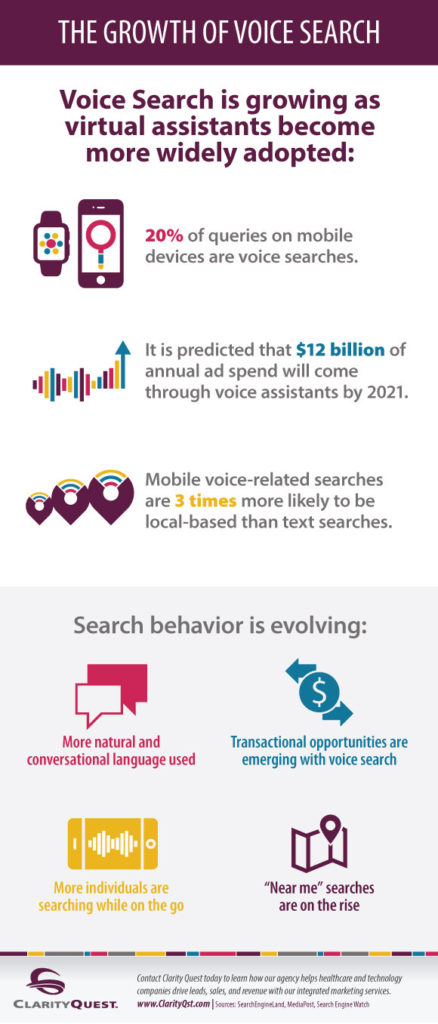There are 100 billion searches performed online each day, according to iProspect. An increasing number of these searches are conducted with the help of virtual assistants that recognize vocal cues. According to Google’s CEO, Sundar Pichai, 20% of mobile device queries are conducted through voice search.
When consumers speak their search cues, they typically use more conversational and natural language. On mobile devices, individuals can use spoken commands to locate nearby restaurants, grocery stores, and gas stations. In fact, mobile voice-related searches are three times more likely to be local-focused than text searches, according to Search Engine Watch.
With the introduction of Google Home, a voice-controlled speaker powered by a Google virtual assistant, the popularity of voice search is expected to continue rising. Industry experts predict that voice search assistants will account for $12B in annual ad spend by 2021, according to Media Post. Recent innovations in voice-recognition technology include the ability to search photos and improved messaging features.
It is predicted that #voice #search assistants will account for $12B in annual ad spend by 2021. Share on XView our infographic to learn more trends in voice-related searches and virtual assistants:
Want more expert marketing insights delivered to your inbox? Sign up to receive our monthly newsletter.
Embed this infographic on your own site
Copy and paste the following snippet into your site:
<a href='https://www.clarityqst.com/library/infographics/the-growth-of-voice- search/'><img src='https://www.clarityqst.com/wp- content/uploads/2016/11/infographic-growth-of-voice-search-clarity-quest.jpg' alt='The Growth of Voice Search Infographic'/></a><br/> Via: <a href='https://www.clarityqst.com'>Clarity Quest Marketing</a>



